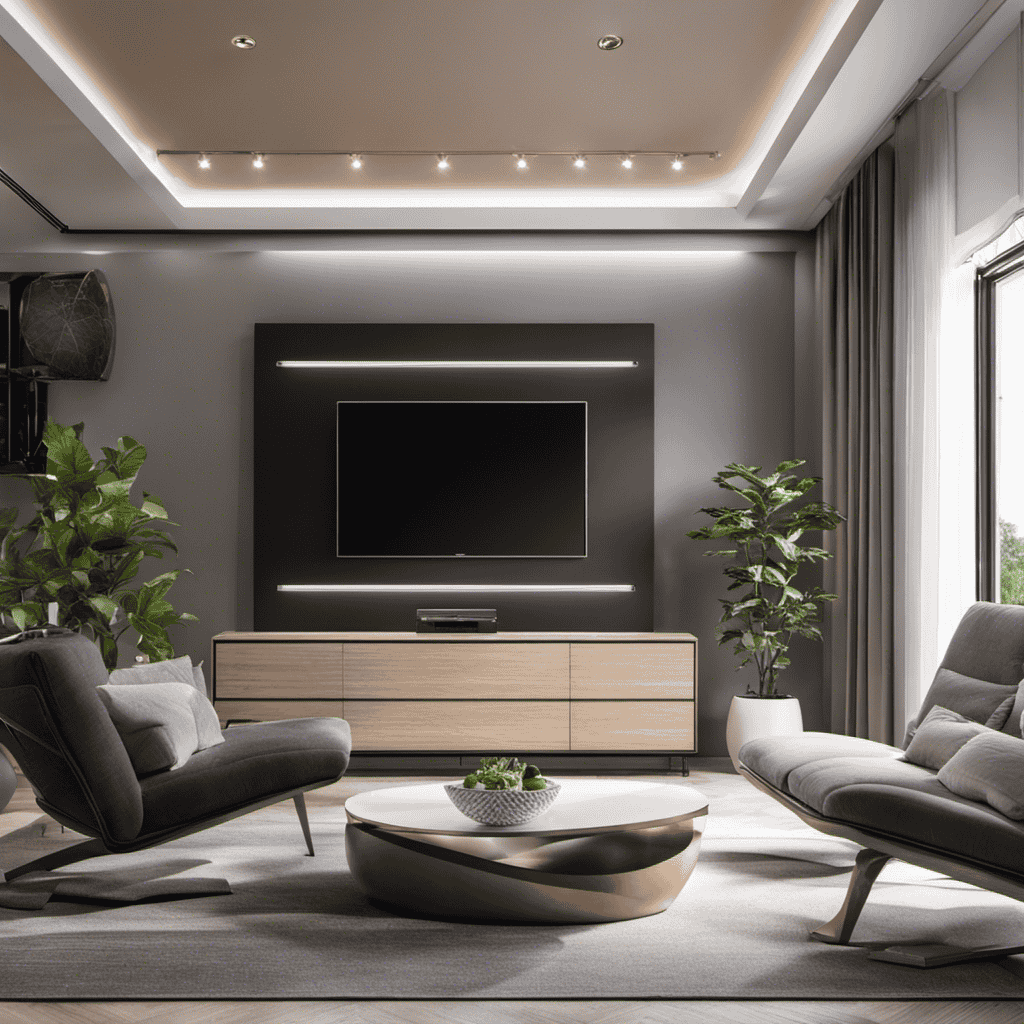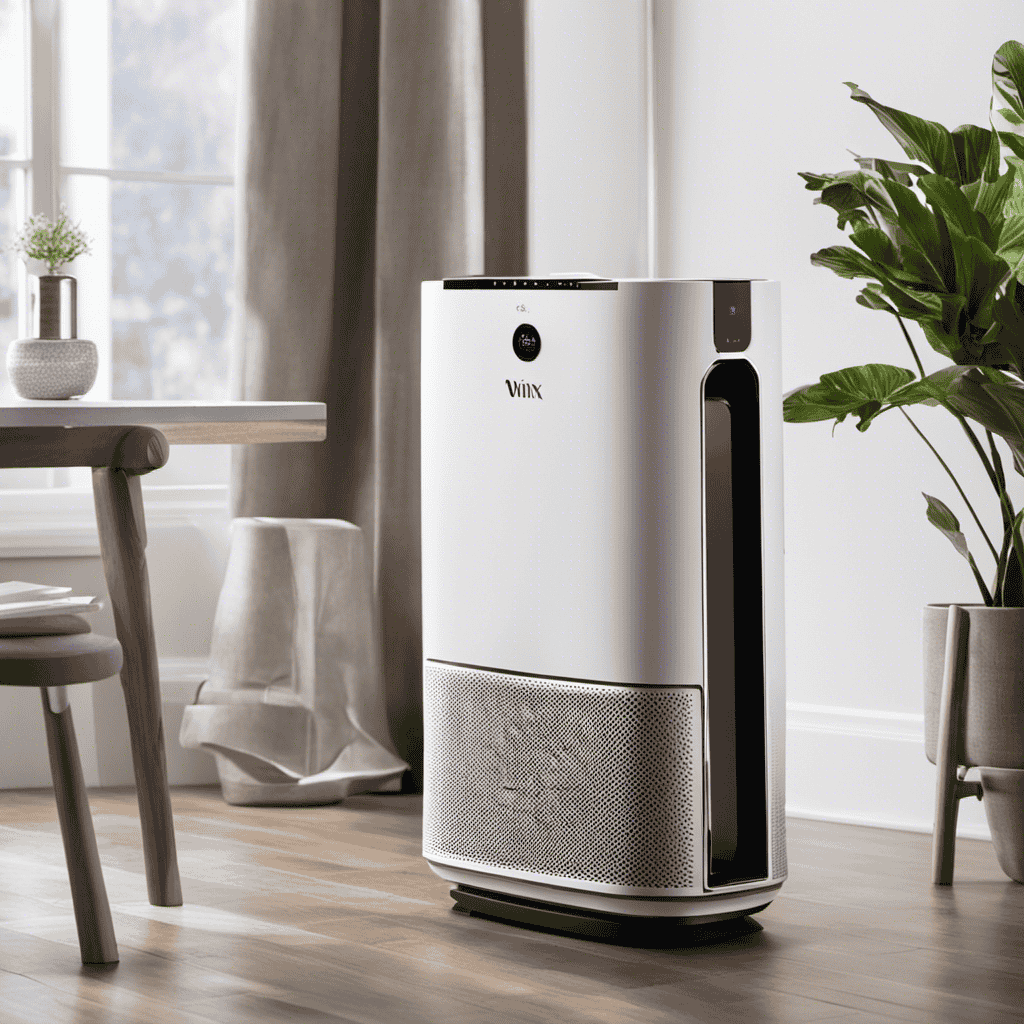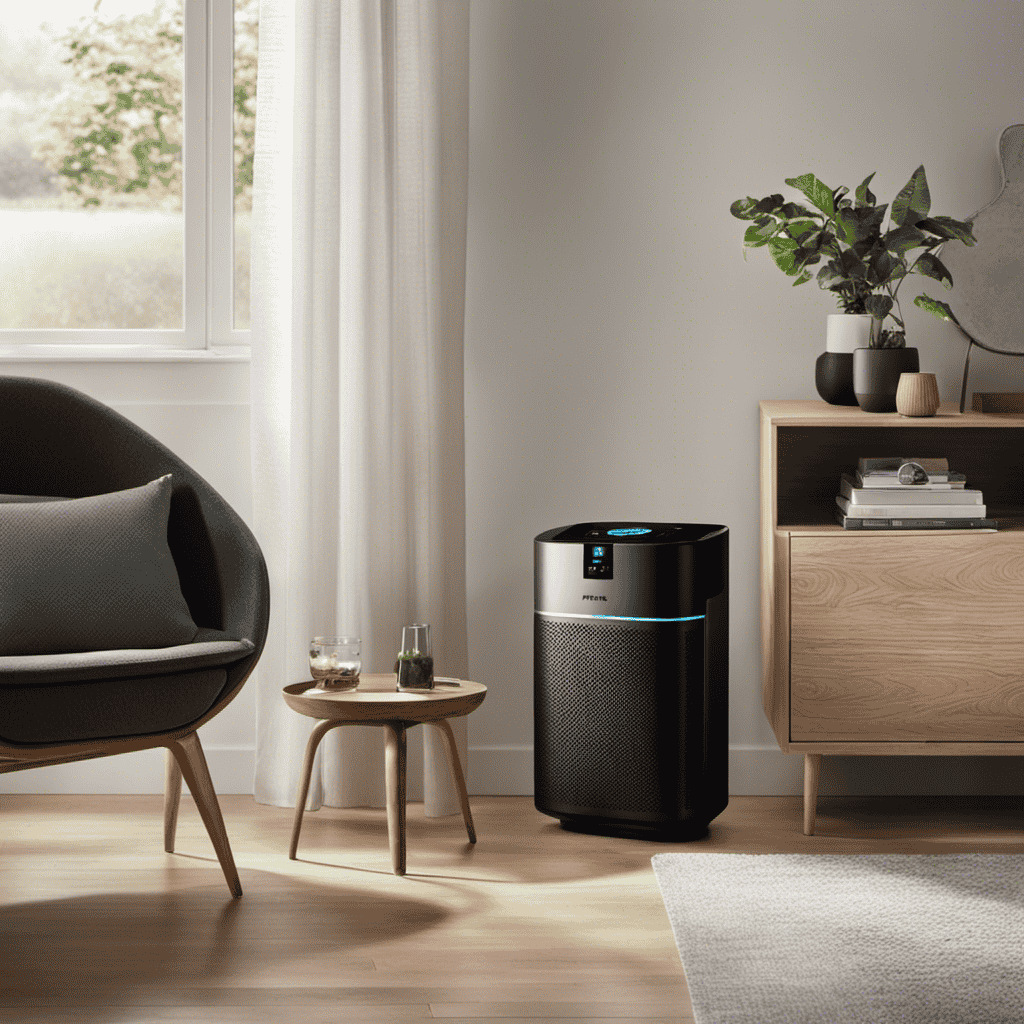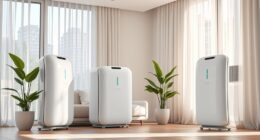While exploring the realm of air purifiers, I can’t shake this feeling of uneasiness. There seems to be a hidden downside lurking behind their claims of purer air and improved health.
In this deep dive, we’ll uncover the potential risks and side effects that these devices may bring. From hidden dangers to unintended consequences, we’ll shed light on the truth behind air purification.
Brace yourself, for what you discover may leave you questioning the safety of your own home.
Key Takeaways
- Some air purifiers produce ozone and ultrafine particles that can irritate the respiratory system and worsen asthma and other respiratory conditions.
- Prolonged exposure to contaminants emitted by air purifiers can lead to chronic health problems.
- Air purifiers can have unintended consequences, such as the production of harmful byproducts and the release of ozone.
- Air purifiers contribute to increased energy consumption, waste generation, and have adverse effects on the environment.
The Hidden Dangers of Air Purifiers
I’ve discovered some concerning information about the hidden dangers of air purifiers.

While these devices are marketed as a solution to improve indoor air quality, research has revealed potential negative effects and long-term consequences.
One of the main concerns is the production of ozone, a harmful gas, by certain types of air purifiers. Ozone can irritate the respiratory system and exacerbate asthma and other respiratory conditions.
Additionally, some air purifiers emit ultrafine particles, which can penetrate deep into the lungs and cause inflammation. These particles may also contain harmful chemicals, such as volatile organic compounds (VOCs), which can have adverse health effects.
It’s important to carefully consider the potential risks associated with air purifiers and choose models that have been independently tested for safety and effectiveness.

Health Risks Associated With Air Purifiers
There are potential health risks to consider when using air purifiers.
While these devices are designed to clean the air we breathe, they can also introduce unseen contaminants and have long-term effects on our health.
It’s important to understand that air purifiers can produce harmful byproducts, such as ozone, which can exacerbate respiratory conditions like asthma and cause lung irritation.
Additionally, some air purifiers may not effectively remove all types of contaminants, leaving behind harmful particles that can trigger allergies or worsen existing respiratory issues.

Prolonged exposure to these contaminants can lead to chronic health problems in the long run.
Therefore, it’s crucial to choose air purifiers that are certified and meet safety guidelines, as well as regularly maintain and clean them to ensure their optimal performance and minimize potential health risks.
Unintended Consequences of Air Purification
As I delve deeper into the world of air purification, I can’t help but acknowledge the unintended consequences that come along with it.
While the primary goal of air purification is to improve indoor air quality, there are potential health risks that can arise, such as the production of harmful byproducts or the release of ozone.
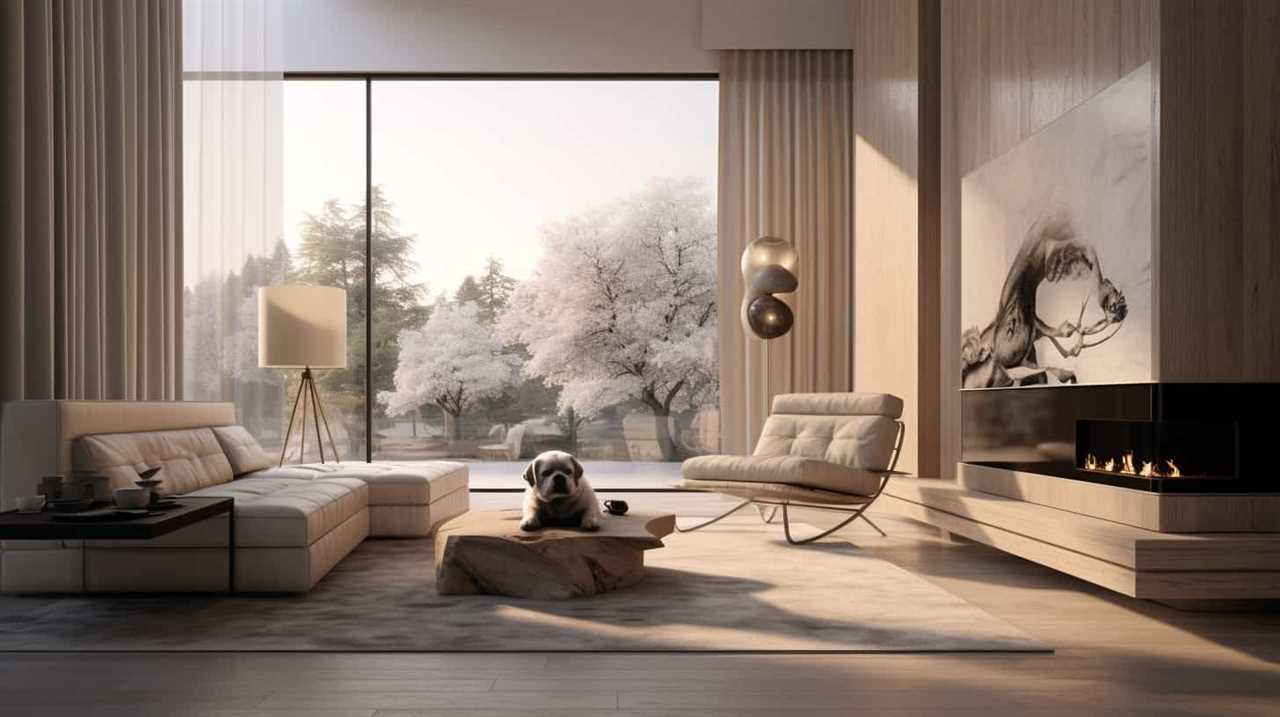
Additionally, the environmental impacts of air purification, including energy consumption and waste generation, shouldn’t be overlooked.
Health Risks Associated
I’m aware of the potential health risks associated with air purifiers.
While these devices are designed to improve indoor air quality, they require regular maintenance to ensure their effectiveness and safety. Neglecting air purifier maintenance can lead to long-term effects that can compromise our health. Over time, filters can become clogged with pollutants, reducing their efficiency and allowing harmful particles to circulate in the air. Additionally, if not cleaned properly, air purifiers can become breeding grounds for mold and bacteria, which can exacerbate respiratory conditions and allergies.
It’s important to regularly clean and replace filters as recommended by the manufacturer to minimize these risks.

Transitioning into the subsequent section about the environmental impacts of air purifiers, it’s worth considering how these devices can affect not only our health but also the world around us.
Environmental Impacts of
Transitioning into the environmental impacts, I’ve discovered that air purifiers can contribute to increased energy consumption and waste. While they’re designed to improve indoor air quality, it’s important to consider their potential negative effects on the environment. Here are three key environmental impacts to be aware of:
Increased energy consumption: Air purifiers require electricity to operate, and some models consume a significant amount of energy. This can contribute to a higher carbon footprint and increased greenhouse gas emissions, further contributing to air pollution.
Waste generation: Air purifiers often use disposable filters that need to be replaced regularly. These filters contain materials that can be harmful to the environment when disposed of improperly. Additionally, the production and disposal of these filters contribute to waste generation.

Manufacturing impact: The production of air purifiers involves the extraction and processing of raw materials, which can have adverse effects on the environment. Furthermore, the transportation of these devices adds to carbon emissions and air pollution.
Considering these environmental impacts is crucial when making decisions about using air purifiers. While they may improve indoor air quality, it’s important to weigh the potential drawbacks and seek sustainable alternatives whenever possible.
Misuse and Overuse
Misuse and overuse of air purifiers can lead to negative consequences for both the environment and our health.
While air purifiers are designed to improve indoor air quality, improper usage can have long-term effects.

One common mistake is running the purifier continuously, even when it isn’t necessary. This not only wastes electricity but also puts unnecessary strain on the machine, reducing its lifespan.
Another issue isn’t properly maintaining the filters. Over time, dirty filters can become ineffective, allowing pollutants to circulate back into the air.
Additionally, some people may mistakenly believe that air purifiers can eliminate all indoor pollutants, leading them to neglect other essential measures such as proper ventilation and regular cleaning.
To avoid these problems, it’s important to use air purifiers judiciously, follow manufacturer instructions for filter maintenance, and understand their limitations in improving air quality.

Potential Side Effects of Air Purifiers
As an air purifier enthusiast, I must admit that there are potential side effects that come with these devices.
While they’re designed to improve indoor air quality, some individuals may experience health risks such as respiratory irritation or allergic reactions from the purification process.
It’s important to be aware of these possibilities and take appropriate measures to mitigate any potential risks.
Health Risks Associated
I’ve discovered some concerning health risks associated with using air purifiers. While these devices are designed to improve indoor air quality, they can also pose certain dangers. It’s important to be aware of the potential risks to make informed decisions about using air purifiers.

Here are three health risks to consider:
Ozone generation: Some air purifiers produce ozone, a gas that can irritate the respiratory system and worsen existing respiratory conditions.
Chemical exposure: Certain air purifiers release harmful chemicals into the air, such as formaldehyde and volatile organic compounds (VOCs), which can have detrimental effects on our health.
Inadequate filtration: If an air purifier isn’t equipped with an effective filtration system, it may not adequately remove indoor pollutants, leaving us exposed to harmful particles.

These health risks highlight the importance of choosing air purifiers carefully and ensuring they meet safety standards.
However, another concern that arises from the use of air purifiers is allergic reactions from certain individuals.
Allergic Reactions From?
Allergic reactions can occur in individuals who are sensitive to the particles and allergens that air purifiers are designed to remove. While air purifiers are marketed as a solution to improve indoor air quality, they can inadvertently release allergens into the air, triggering allergic reactions in susceptible individuals. Common triggers for allergic reactions from air purifiers include dust mites, pet dander, pollen, mold spores, and volatile organic compounds (VOCs). These allergens can be present in the air and are often the very substances that air purifiers are intended to eliminate. However, if not properly maintained or equipped with the appropriate filters, air purifiers can actually disperse these allergens, exacerbating symptoms in those with allergies or asthma. It is important to carefully consider the potential risks and benefits of using an air purifier, especially for individuals prone to allergies or respiratory conditions.
| Common Allergens | Potential Effects |
|---|---|
| Dust mites | Sneezing, itching, congestion |
| Pet dander | Watery eyes, coughing, wheezing |
| Pollen | Runny nose, itchy throat, breathing difficulties |
| Mold spores | Allergic rhinitis, skin irritation |
| VOCs | Headaches, nausea, respiratory irritation |
Understanding the common triggers and potential effects of allergic reactions from air purifiers can help individuals make informed decisions about their indoor air quality and overall health. It is important to carefully select and maintain air purifiers to ensure they effectively remove allergens, rather than inadvertently releasing them into the air. Additionally, consulting with a healthcare professional or allergist can provide valuable guidance and recommendations for managing allergies and respiratory conditions in relation to air purifier use.

Debunking Myths About Air Purifier Safety
Unfortunately, some misconceptions about air purifier safety persist despite the available evidence. It’s important to debunk these myths to ensure that people can make informed decisions about using air purifiers. Here are three common misconceptions about air purifier safety:
Air purifiers are harmful to breathe in: This is a common misconception, but the truth is that air purifiers are designed to remove harmful particles from the air, not release them. They use filters or other technologies to capture pollutants and improve air quality.
Air purifiers produce ozone: While it’s true that some air purifiers can produce ozone as a byproduct, most modern air purifiers are designed to minimize ozone emissions. Look for air purifiers that are certified as ozone-free to ensure safety.
Air purifiers can replace proper ventilation: Air purifiers can certainly improve indoor air quality, but they aren’t a substitute for proper ventilation. It’s important to have a well-ventilated space to ensure a constant supply of fresh air.

Precautions and Considerations for Air Purifier Use
Now that we’ve debunked the myths surrounding air purifier safety, let’s dive into some important precautions and considerations for their use.
It’s crucial to remember that while air purifiers can be effective in improving air quality, they aren’t a cure-all solution. First and foremost, proper maintenance is key. Regularly clean and replace filters according to the manufacturer’s instructions to ensure optimal performance.
Additionally, it’s important to consider the size and capacity of the air purifier in relation to the room it will be used in. Using an appropriately-sized unit will ensure that it can effectively clean the air in the given space.
Lastly, it’s crucial to be aware of any potential health risks associated with certain air purifier technologies, such as ozone-generating models, and choose a unit that meets safety standards.
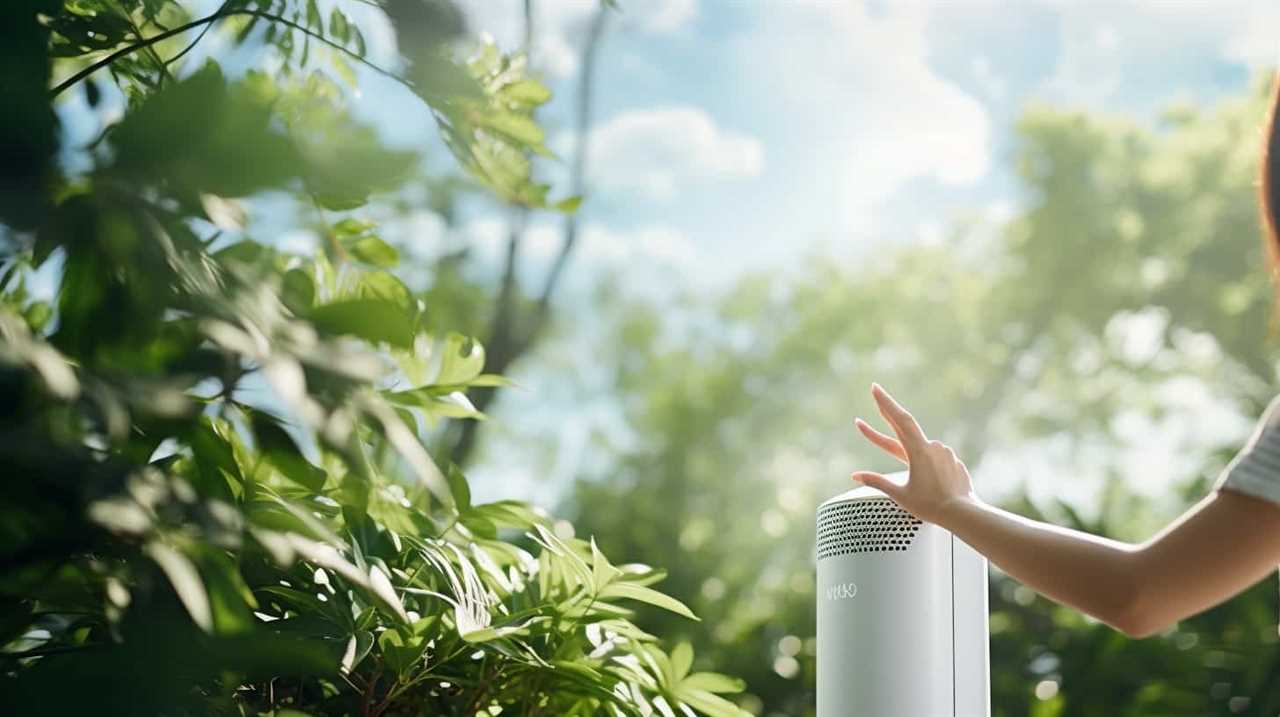
Following these precautions and considerations will help maximize the benefits of air purifier use while minimizing any potential risks.
Are there any potential risks or side effects of using air purifiers to tackle invisible threats in the home?
While air purifiers are generally safe, using them to combat invisible threats may come with potential risks or side effects. Some models emit ozone, which can irritate the lungs. Ineffective filtration can also spread harmful pollutants. Regular maintenance and proper usage can minimize these risks when using air purifiers and invisible threats.
Frequently Asked Questions
Can Air Purifiers Completely Eliminate All Types of Indoor Air Pollution?
Air purifiers are effective at removing specific pollutants from indoor air, but they may not completely eliminate all types of indoor air pollution. They can effectively remove dust, pollen, pet dander, and some airborne bacteria and viruses.
However, they may have limitations in larger spaces, as their effectiveness can decrease with increased room size and limited air circulation.
It’s important to consider the specific needs of your indoor environment when choosing an air purifier.

Are There Any Long-Term Health Risks Associated With Prolonged Use of Air Purifiers?
There may be potential long-term health risks associated with prolonged use of air purifiers.
The effects of using air purifiers for extended periods of time are a topic of concern.
It’s important to thoroughly analyze the potential risks and side effects that may arise from continuous exposure to air purifiers.
Understanding these effects can help make informed decisions about their use and ensure the overall well-being of individuals in indoor environments.
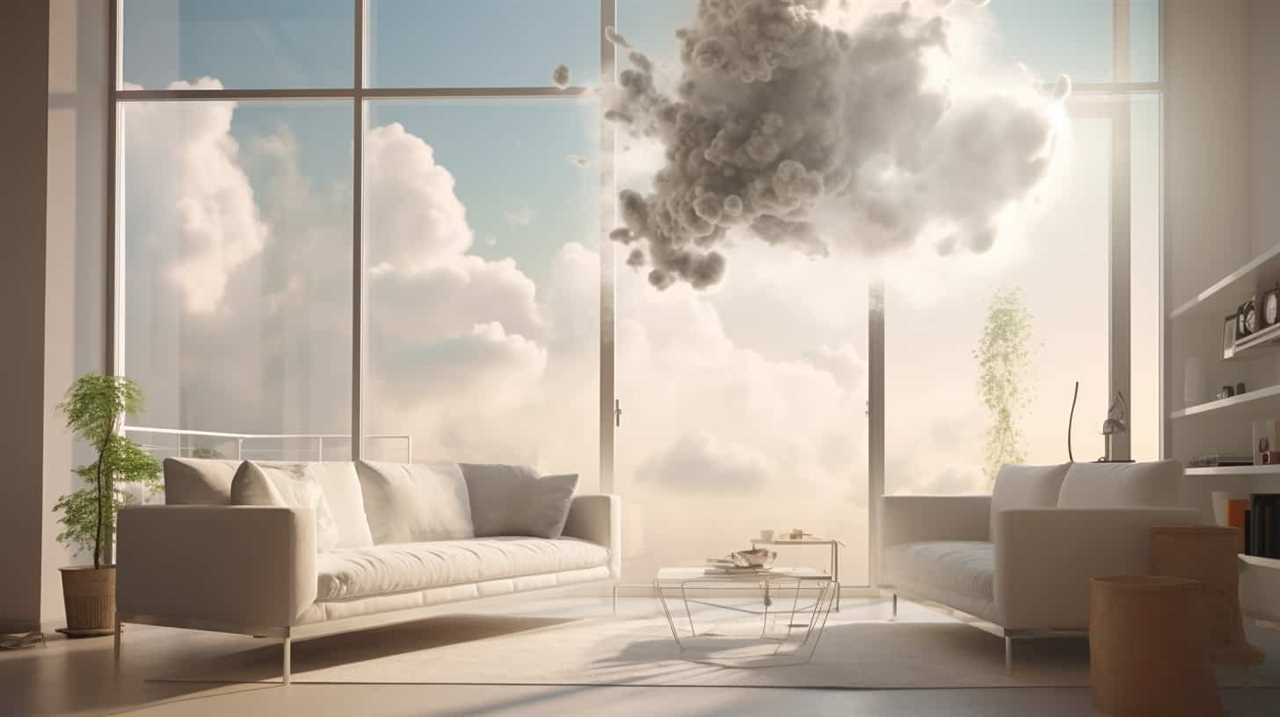
Can Air Purifiers Worsen Existing Respiratory Conditions or Allergies?
Air purifiers can worsen existing respiratory conditions or allergies, such as asthma or sinusitis. According to a study, 40% of asthma sufferers reported increased symptoms when using air purifiers. These devices can circulate allergens and irritants, triggering flare-ups and worsening symptoms.
It’s important to choose an air purifier with a HEPA filter, as it effectively captures airborne particles that can aggravate respiratory conditions. Consulting with a healthcare professional can help determine if an air purifier is suitable for managing respiratory conditions.
Are There Any Potential Side Effects of Using Air Purifiers, Such as Dryness or Irritation of the Respiratory System?
Using air purifiers can potentially lead to side effects such as dryness or irritation of the respiratory system. These devices are designed to improve indoor air quality by removing pollutants and allergens.
However, they can also reduce humidity levels, which may cause dryness and discomfort in the respiratory system. It’s important to consider this potential drawback when weighing the potential benefits and effectiveness of using air purifiers.

Do Air Purifiers Emit Any Harmful Byproducts or Chemicals Into the Environment?
Air purifiers are known for their ability to improve indoor air quality, but there are concerns about potential risks and chemical emissions.
However, it’s important to note that not all air purifiers emit harmful byproducts or chemicals into the environment.
Many reputable brands use advanced filtration technologies to capture and remove pollutants without releasing any harmful substances.
It’s crucial to choose a high-quality air purifier and regularly maintain it to minimize any potential risks and ensure clean and healthy indoor air.

Conclusion
After delving into the potential risks and side effects of air purifiers, it’s clear that these seemingly innocent devices have a dark side. Like a wolf in sheep’s clothing, they may harm our health, lead to unintended consequences, and result in unpleasant side effects.
Debunking myths about their safety is essential, but we must also approach their use with caution. Let’s not underestimate the hidden dangers that lurk within the air we breathe, for ignorance could be our downfall.



